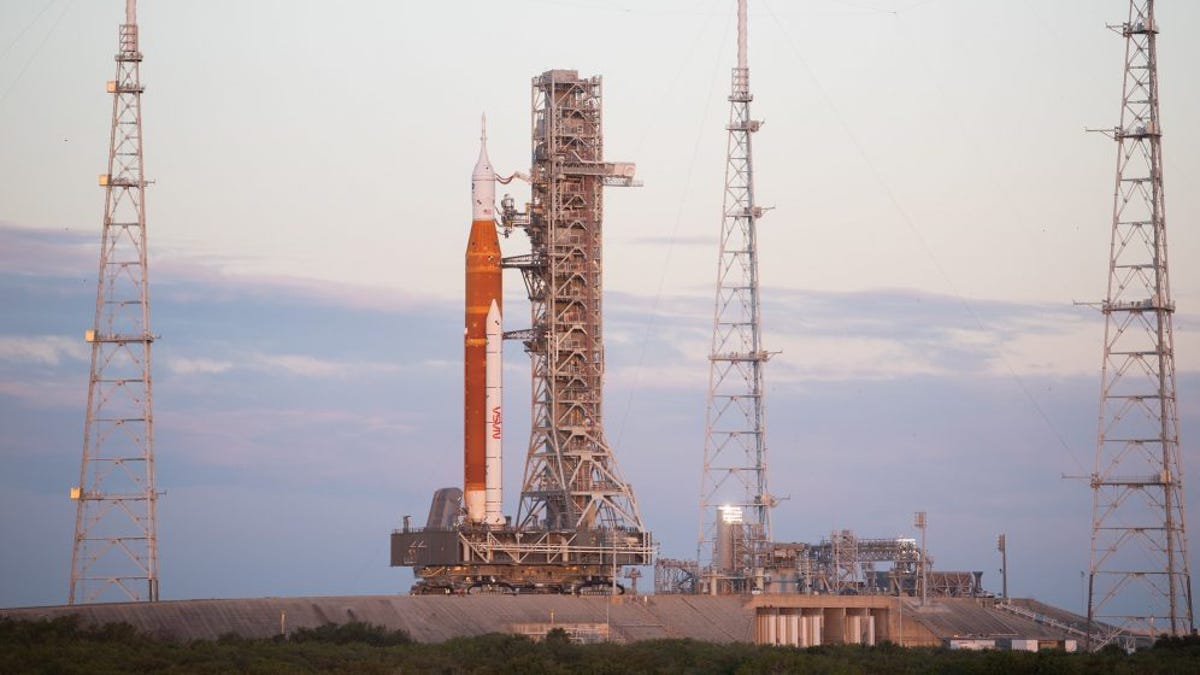NASA Inspects $4.1 Billion Artemis I Moon Rocket for Hurricane Damage
NASA pushed back the launch of the Artemis I moon mission due to the intense storm.

Artemis I returned to the launchpad earlier this month.
Artemis I can't catch a break. NASA's much delayed, uncrewed round-the-moon mission faced a new obstacle ahead of its launch. Hurricane Nicole reached Florida early on Thursday morning packing high winds. NASA preemptively announced a delay in the launch, pushing it from Nov. 14 to Nov. 16 to allow time for post-storm inspections and repairs.
Nicole was downgraded to a tropical storm after making landfall just south of Vero Beach. Artemis I is sitting on launchpad 39B at the Kennedy Space Center near Orlando, about 80 miles (130 kilometers) north of Vero Beach.
High winds were the biggest worry. The rocket is designed to weather winds of up to 74 knots (85 mph/137 kph) while on the pad. NASA associate administrator Jim Free tweeted an update on Thursday saying wind sensors at the pad registered peak wind gusts up to 71 knots (82 mph/131 kph).
According to Free, initial camera inspections showed minor damage to Artemis I, including loose caulk and tears in weather coverings. In another update on Friday, Free said NASA will make minor repairs and continue preparing the rocket for launch.
NASA made the call on Sunday evening to leave Artemis I on the pad, calling it the safest option for the launch hardware.
"Adjusting the target launch date will allow the workforce to tend to the needs of their families and homes, and provide sufficient logistical time to get back into launch status following the storm," the agency said. A "ride-out" team of employees stayed at Kennedy Space Center during the storm to monitor conditions.
NASA rolled Artemis I -- which consists of the massive Space Launch System rocket and an Orion spacecraft capsule on top -- back to the launchpad last week after having tucked it away in its giant garage for safekeeping during Hurricane Ian in late September.
NASA's Office of Inspector General, an oversight group, has estimated the cost (PDF) of a single Artemis launch at $4.1 billion (£3.5 billion/AU$6.3 billion), so leaving Artemis I outside represents an expensive gamble. In preparation, NASA powered down components of SLS and Orion, secured hatches and checked for any nearby debris that could go flying.
Teams will assess and prepare Artemis I now the storm has passed. The new two-hour launch window will open at 1:04 a.m. ET on Nov. 16 (10:04 p.m. PT on Nov. 15). There is a backup launch window available on Nov. 19 if the rocket isn't ready to go on the earlier date.
Artemis I is the first big step in NASA's attempt to return humans to the surface of the moon. There will be no astronauts on board, but the space agency wants to show the rocket system and spacecraft are ready to safely carry humans to our lunar neighbor.
There are still some unknowns at this point. Was anything major damaged? How long will repairs take? The hope was for Artemis I to emerge from the storm intact and ready for launch, but it's too soon to know if NASA will hit the revised launch date.

